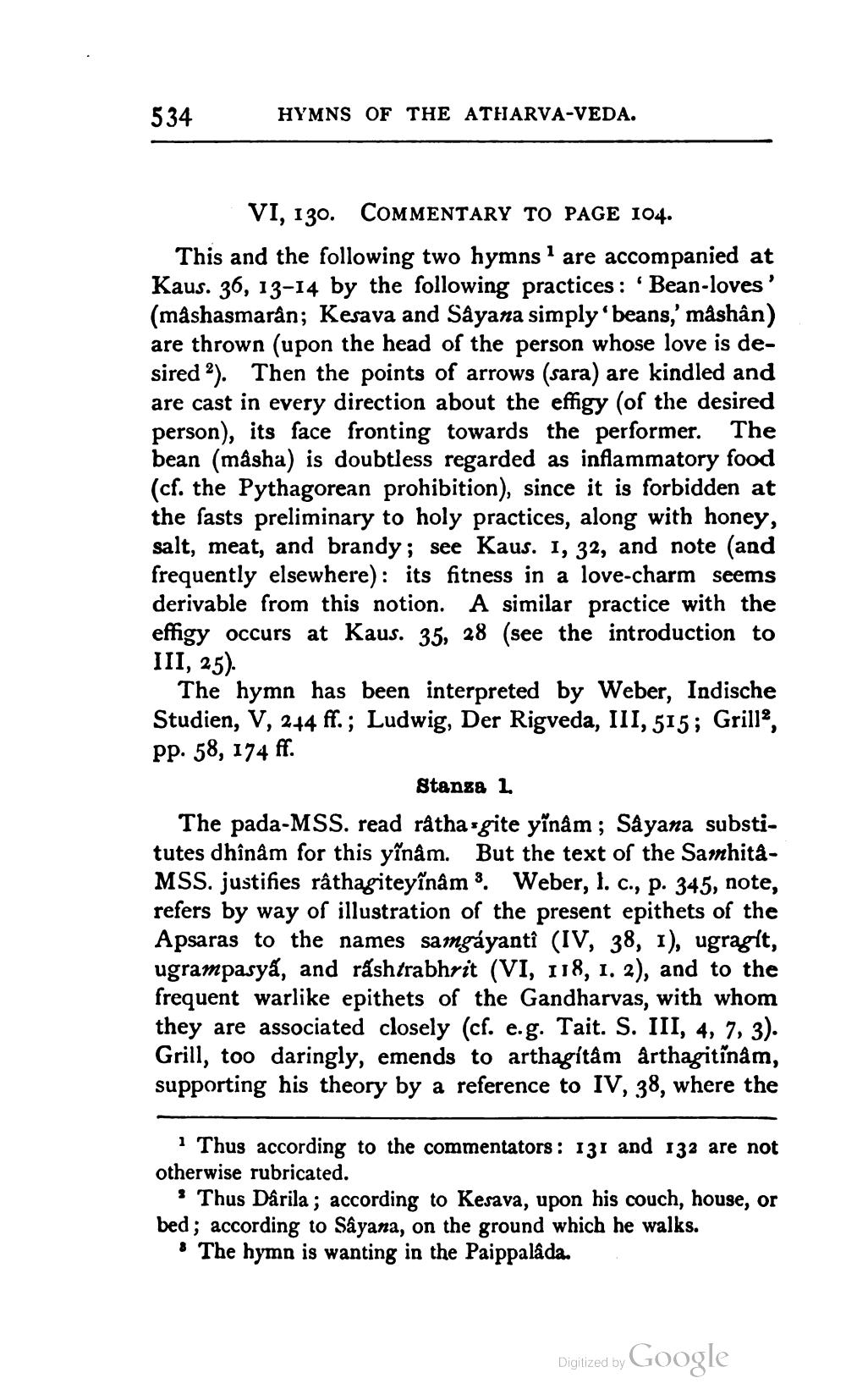________________
534
HYMNS OF THE ATHARVA-VEDA.
VI, 130. COMMENTARY TO PAGE 104. This and the following two hymns are accompanied at Kaus. 36, 13-14 by the following practices : 'Bean-loves' (mashasmarân; Kesava and Sayana simply beans,' måshân) are thrown (upon the head of the person whose love is desired ?). Then the points of arrows (sara) are kindled and are cast in every direction about the effigy (of the desired person), its face fronting towards the performer. The bean (masha) is doubtless regarded as inflammatory food (cf. the Pythagorean prohibition), since it is forbidden at the fasts preliminary to holy practices, along with honey, salt, meat, and brandy; see Kaus. 1, 32, and note (and frequently elsewhere): its fitness in a love-charm seems derivable from this notion. A similar practice with the effigy occurs at Kaus. 35, 28 (see the introduction to III, 25).
The hymn has been interpreted by Weber, Indische Studien, V, 244 ff.; Ludwig, Der Rigveda, III, 515; Grill, pp. 58, 174 ff.
Stanga 1. The pada-MSS. read råthasgite yînâm; Sayana substitutes dhînâm for this yînâm. But the text of the SamhitaMSS. justifies râthagiteyînâm 3. Weber, 1. c., p. 345, note, refers by way of illustration of the present epithets of the Apsaras to the names samgayanti (IV, 38, 1), ugragit, ugrampasya, and rashtrabhrit (VI, 118, 1, 2), and to the frequent warlike epithets of the Gandharvas, with whom they are associated closely (cf. e.g. Tait. S. III, 4, 7, 3). Grill, too daringly, emends to arthagitâm árthagitinâm, supporting his theory by a reference to IV, 38, where the
Thus according to the commentators : 131 and 132 are not otherwise rubricated.
* Thus Darila ; according to Kesava, upon his couch, house, or bed; according to Sâyana, on the ground which he walks.
• The hymn is wanting in the Paippalåda.
Digized by Google




